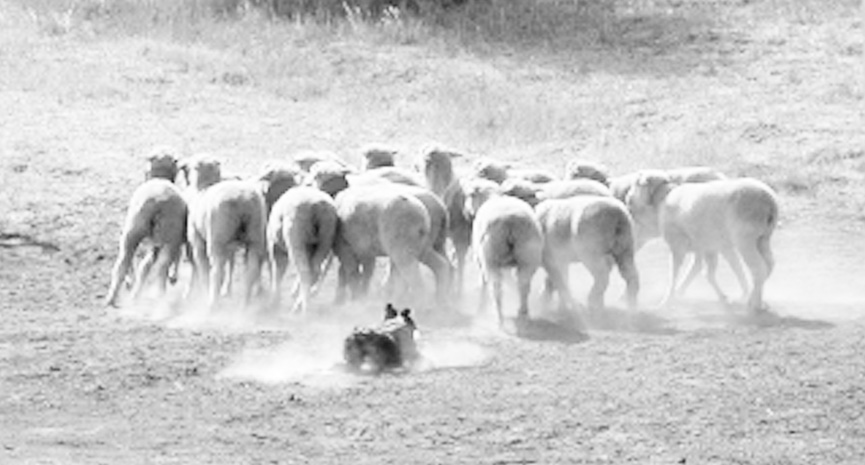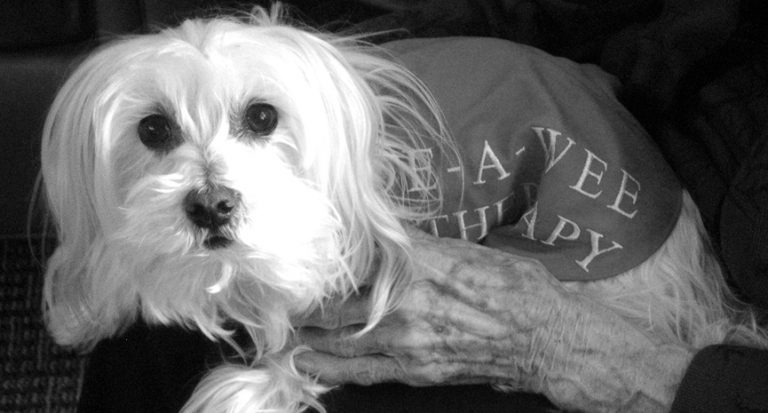Every day canines are trained and hired to be members of the professional world that extends beyond being our companions.
There’s a very good reason dogs have earned the reputation of “man’s best friend”. We count on our dogs to sit at our feet at dinner, bark when someone is coming to the door, and run by our sides when it’s time for a jog, but they do so much more than that singulary important job. Every day canines are trained and hired to be members of the professional world that extends beyond being our companions.
Although most people know that different types of working dogs exist, what they don’t know is what these super dogs are capable of… and if we knew we would surely see our canine pets in a much higher status light.
When it comes to training, “come” and “sit” are vital commands and a must in every owners’ vocabulary. But do we even know the half of what our pooch is capable of? Buried in that furry head is keen intelligence, loyalty, and willingness to please–all needed for intense training and the immense tasks that we place on the different types of working dogs. (For example just see cover!)
And remember instead of a paycheck they ask for payment in belly scratches, long walks, and extra bones. Following are just some of the jobs dogs perform beside the most important one… being our pets.
The task of “best friend” is the most common dog job. As the world’s first domesticated animal, dogs have a long history of being by humans’ side–doing everything from working hard to hanging out. There is no question that nothing compares to the relationship between a dog and their human.
So for many families the first job that normally comes to mind when thinking about working dog breeds is guarding or watching. The difference? A guard dog will protect what it is trained to, while a watch dog will bark to “scare” away potential danger and alert their handlers to it. Today, this basic task has been taken a few steps further, and working dogs are used for police work and the military with most common breeds used being are Malinois, German Shepherds, Dobermans, and Rottweilers. Heck just the sight of theses breeds does the trick sometimes!
Now “War Dogs” have been used in combat since ancient times. Today’s war dogs have a 98% success rate in bomb detection making them incredible assets in providing safety to their soldiers. Military dogs also reduce PTSD symptoms if they are able to return home with their partners. There are now many war dog adoption programs and all could use our financial assistance. Seems PTSD is in the news every day and why not military life is stressful!
“Sniffer Dogs”, detection or detector dogs are trained to search for and detect drugs, bombs, weapons, and things such as agricultural products at airports, harbors, schools, businesses. Any size or breed of dog can be trained as a detector dog, but the most common breeds used for these types of working dogs are Labs, Beagles, German Shepherds. And while active indication used to be the most common way of training these dogs (scratching or barking at the source of the scent), passive indication (sitting in front of the source) is now the preferred method.
“Sled Dogs”, imagine a pack of dogs having the strength, discipline, and organization to effectively work together as a team to pull a sled full of goods, and humans through the coldest winds and harshest conditions. Other working species such as horses can’t handle the wicked environment. Yet “Sled dogs” have unmatched resiliency and amazing stamina. Many people in the most northern and southern parts of the world rely on them solely for transportation and deliveries of crucial goods. For many after a long day of work their reward is a good night’s sleep… outside in frigid weather. Talk about tough!
“Acting Dogs”, everyone has their favorite movie about a dog sometimes a dog can steal a show just by being a dog! However these canines go through rigorous training to become the star of the show. Acting dogs come in all shapes in sizes, but one thing they all have in common in the amazing ability to take direction and melt our hearts. Who doesn’t know of Lassie, Rin Tin Tin, Old Yeller?
“Herding Dogs” have been used for centuries in protecting and helping to herd sheep, goats, cows. These dogs must be tough, quick, intelligent and bold. Besides keeping the flocks together, they also have to be able to protect from predators, ranging from wolves and coyotes to poachers while running all day long!
And it is hard to take the herding instinct out of a dog, even in domesticated situations. Who hasn’t all seen that ONE dog at the park, constantly trying to round up the rest of the dogs by barking and running in circles? Don’t hold it against him, it’s in his DNA… because he thinks the other dogs are sheep, or cows. Herding dogs maintain control over livestock, rounding them up when it’s time to get back to the farm. Talk about a job, these dogs can gather up to hundreds of livestock at a time.
“Hunting Dogs”, think Retrievers, have been an important tool since ancient times, and are still employed worldwide today. They are trained to detect game, flush it out and retrieve for the hunter. And what’s really amazing is these dogs not only track, but once found they don’t chew their prey to pieces! Included in this class of dog is the terrier and other small breeds, used for hunting vermin.
“Search & Rescue Dogs” pair an amazing sense of smell and direction with unmatched bravery and you’ve got yourself a search and rescue dog. These heroes go into serious disaster situations to help retrieve lost humans. Imagine, these dogs risk their lives going into avalanches and other natural as well as unnatural disasters that we see all to often on the news these days just doing their jobs saving humans. We’ve almost gotten used to their presence as normal but know it took hours upon hours of training for that dog to be there.
“Tracking dogs” are used to find criminals and lost people. While German Shepherds, Belgian Malinois and other working breeds mentioned before can be used for this job, hounds, terriers, and retrievers are the most popular types of hunting and tracking dogs. These dogs are trained to be the eye, ears, and retrievers for their human counterparts. In fact, Bloodhounds were the first breed to be used for human tracking. Think of recent NY State prison break and the hundreds of dogs used there!
“Seeing-eye/Guide Dog”, well who hasn’t witnessed these working canines among us? Specially trained and selected from puppy-hood, these dogs guide their blind or impaired owners while keeping them safe from danger. More recent still, the hearing-impaired trained dog learns to alert their deaf owner when a phone rings, a car is coming, or to the sound of a fire alarm. With yet another type of service dog working for the physically disabled by helping them with daily tasks such as unloading the washing machine, picking up dropped items or getting in and out of bed.
“Seizure Alert Dogs”, approximately 65 million people around the world have epilepsy–over 2 million in the Unites States alone. Every year, the United States sees 150,000 new diagnoses of epilepsy. Many adults and children living with epilepsy admit that they often avoid certain everyday activities in fear of having a seizure in public.
Seizure Alert Dogs give these individuals greater independence that improves their quality of life by alerting up to an hour ahead of time that a seizure is imminent giving their partners time to take precautions such as lying down or leaving crowded environments. This helps prevent serious injuries due to falls.
One popular theory is that a dog’s superior sense of smell helps to predict an imminent seizure. Others believe that dogs are more sensitive to body language than humans, so they can pick up on tiny changes in behavior and movement that occur prior to seizures.
Lastly, although it isn’t really a trained “job” canines either have it in them or they don’t, dogs are now accepted visiting senior homes and hospitals. In this role a dog’s sole purpose is to make people feel better. You’ll see them walking the halls of hospitals, retirement homes, classrooms, hospices, nursing homes, and disaster relief areas. In fact they are now also accepted in the Courtroom helping some deliver testimony in extremely uncomfortable situations. Therapy dogs make people feel comfortable with physical contact and as a result can make their treatment easier. It’s a special animal chosen for this job; they need to be extra gentle and calm. The companionship of a dog is so beneficial, especially for the mental health of a human, that they are now known simply as “therapy dogs”, an honored title.




